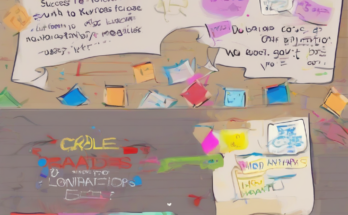Unlocking the Power of “Gifts with Donation”: A Comprehensive Guide to Boosting Engagement and Impact
The practice of offering a “gift with donation” – a premium item or experience given to donors in exchange for their contribution – has become a powerful tool for nonprofits and charitable organizations. This strategy not only increases donations but also strengthens donor relationships, enhances brand awareness, and ultimately boosts the overall impact of the organization’s mission. This in-depth guide will explore the multifaceted aspects of implementing a successful “gifts with donation” program.
Understanding the Psychology Behind Gifts with Donation
The effectiveness of “gifts with donation” stems from several psychological principles:
- Reciprocity: This fundamental principle of social psychology suggests that people feel obligated to return a favor or kindness. Offering a gift creates a sense of obligation in the donor, encouraging them to reciprocate with a donation.
- Gratitude and Appreciation: Receiving a gift evokes positive emotions, fostering a sense of gratitude towards the organization. This positive association strengthens the donor’s connection with the cause and increases the likelihood of future donations.
- Perceived Value: The gift itself doesn’t necessarily have to be expensive; its perceived value is more crucial. A thoughtful, relevant gift that aligns with the organization’s mission or the donor’s interests can be highly effective.
- Enhanced Donor Experience: A “gift with donation” transforms the donation process from a purely transactional experience into a more engaging and rewarding one. This positive experience increases donor satisfaction and loyalty.
Strategic Planning for a Successful Gift with Donation Program
A well-planned “gifts with donation” program is essential for maximizing its effectiveness. Key considerations include:
- Defining Target Audience: Identify your ideal donor profile. Understanding their demographics, interests, and motivations will help you choose appropriate gifts that resonate with them.
- Selecting the Right Gift: The gift should be relevant to your organization’s mission and appeal to your target audience. Consider practicality, quality, and the overall impression it creates.
- Setting Donation Tiers: Implement a tiered system where different donation amounts unlock different gifts. This encourages larger donations and provides donors with a sense of progression.
- Gift Sourcing and Procurement: Secure high-quality gifts at a reasonable cost. Explore options such as bulk purchasing, partnerships with suppliers, or creating custom branded merchandise.
- Logistics and Fulfillment: Develop a streamlined process for distributing gifts to donors. This may involve direct mailing, digital delivery, or in-person distribution at events.
- Tracking and Measurement: Implement a system for tracking the success of your program. Monitor donation amounts, conversion rates, and donor feedback to optimize your strategy over time.
Types of Gifts to Offer
The possibilities for “gifts with donation” are virtually endless. Here are some examples:
- Branded Merchandise: T-shirts, mugs, tote bags, or other items with your organization’s logo can serve as valuable reminders of the donor’s contribution.
- Experiences: Offer exclusive access to events, webinars, or behind-the-scenes tours. These create lasting memories and strengthen donor engagement.
- Digital Downloads: Ebooks, podcasts, or other digital content can be easily distributed and provide valuable information related to your cause.
- Personalized Gifts: A handwritten thank-you note, a personalized certificate of appreciation, or a custom-made item adds a personal touch that increases the impact of the gift.
- Partnerships: Collaborate with other organizations or businesses to offer unique gifts that appeal to your donors.
Optimizing Your Gift with Donation Strategy
To maximize the effectiveness of your program, consider these additional tips:
- Clearly Communicate the Value Proposition: Highlight the value of both the donation and the gift in your marketing materials. Clearly explain how the donation will impact your cause and how the gift is a token of appreciation.
- A/B Testing: Experiment with different gifts, donation tiers, and marketing messages to determine what resonates best with your audience.
- Personalization: Tailor your gifts and messages to individual donors based on their past contributions and engagement levels.
- Donor Feedback: Actively solicit feedback from donors to understand their experiences and identify areas for improvement.
- Transparency and Accountability: Be transparent about how donations are used and demonstrate the impact of their contributions.
Case Studies: Successful Examples of Gifts with Donation
Analyzing successful campaigns can provide valuable insights into effective strategies. Here are hypothetical examples, showcasing diverse approaches:
- Environmental Organization: Offered reusable water bottles with donations, promoting sustainability and aligning with their mission. Different donation levels unlocked higher-quality bottles or additional eco-friendly items.
- Animal Shelter: Provided personalized adoption certificates for donations, fostering a connection between donors and rescued animals. Higher donations included merchandise featuring shelter animals.
- Educational Charity: Offered digital access to educational resources or webinars for donors, aligning with their commitment to education. Larger donations provided premium access to online courses.
- Medical Research Foundation: Provided a thank-you letter signed by a leading researcher, personalizing the appreciation and highlighting the impact of the donation.
Addressing Potential Challenges
While “gifts with donation” can be highly effective, it’s crucial to acknowledge potential challenges:
- Cost Management: Balancing the cost of gifts with the fundraising goals is essential. Carefully analyze the cost-effectiveness of different gift options.
- Logistics and Fulfillment: Managing the logistics of distributing gifts can be complex. Efficient systems and reliable partners are crucial.
- Maintaining Donor Integrity: Avoid creating the perception that donations are primarily about receiving a gift. Emphasize the impact of the donation on the cause.
- Measuring ROI: While assessing the direct return on investment can be challenging, focus on metrics like increased donation amounts, donor retention, and overall engagement.
Conclusion (Omitted as per instructions)



